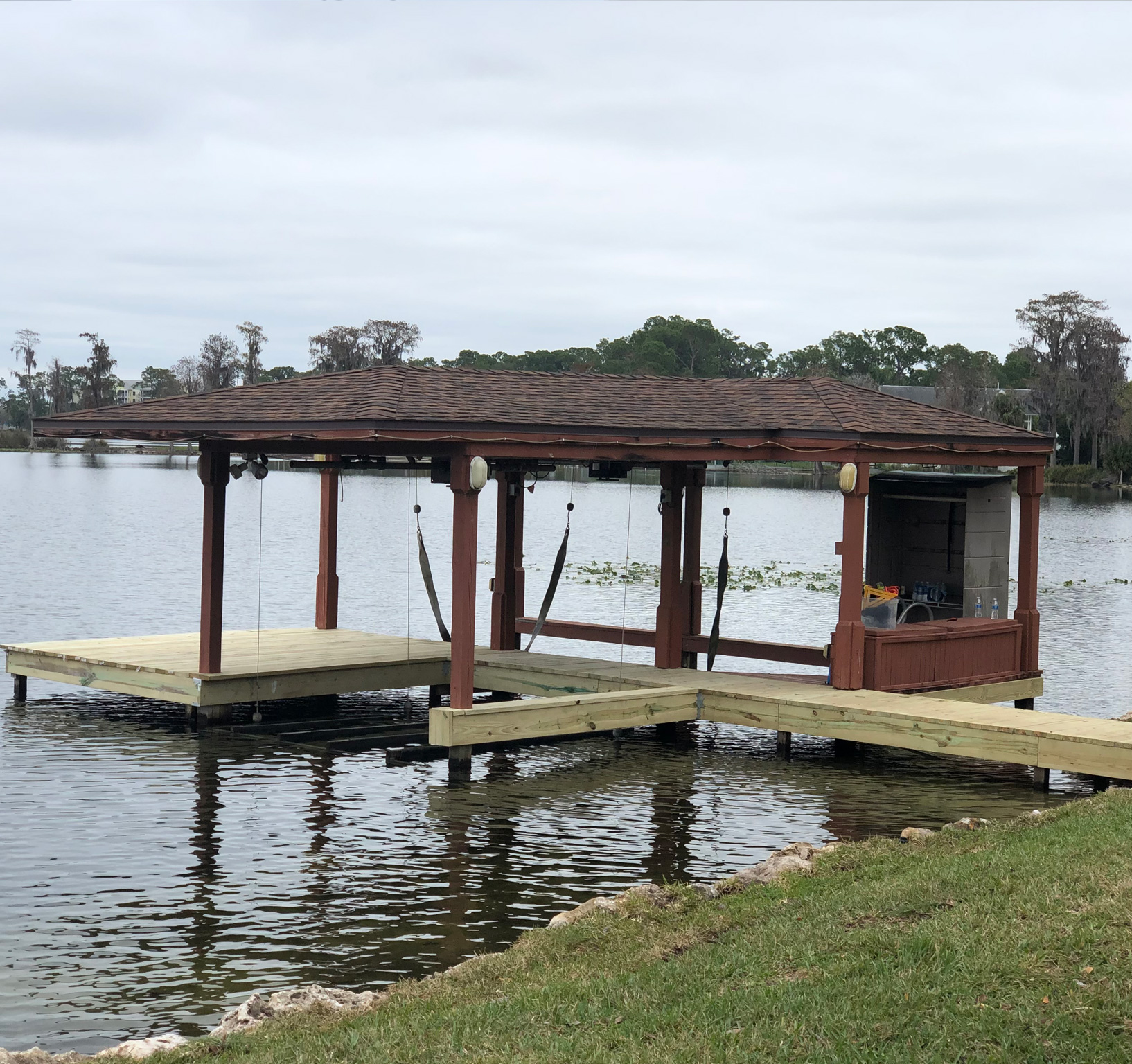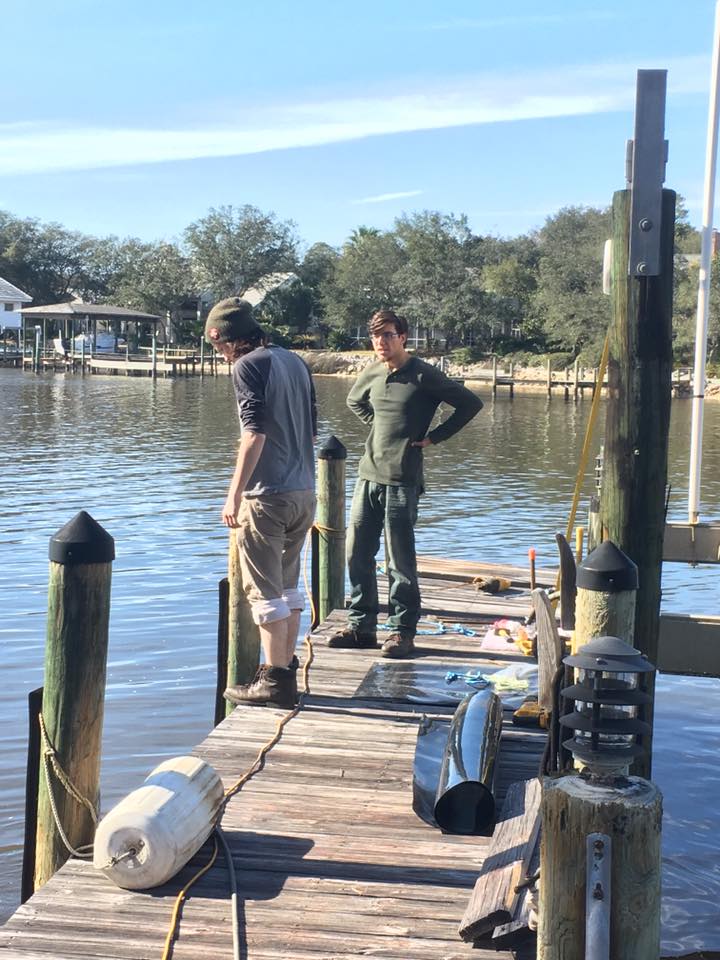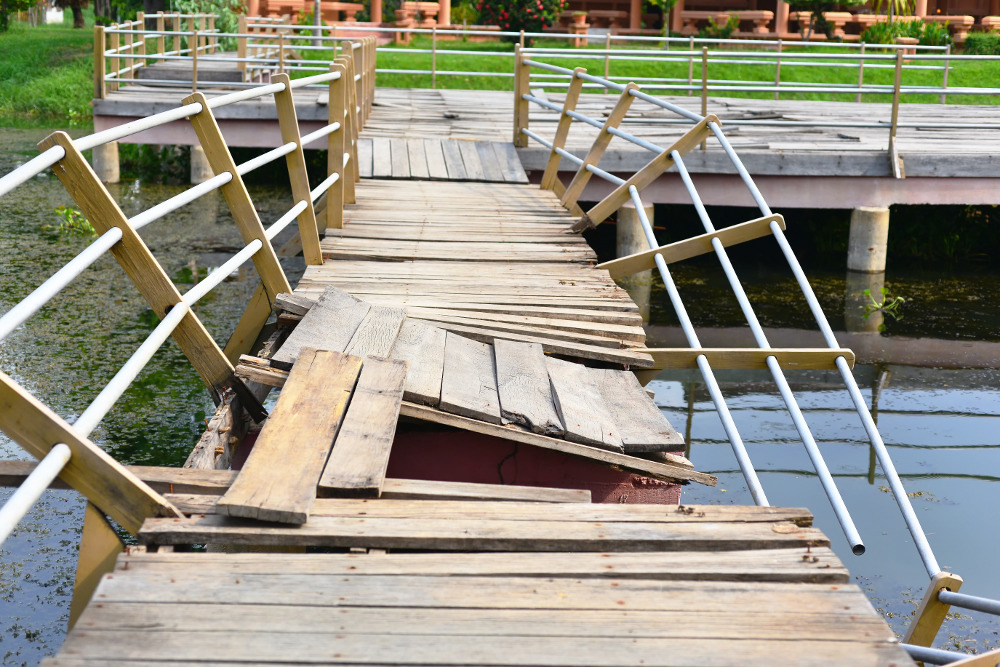The Significance of Timely Dock Repairs for Waterfront Security
The Significance of Timely Dock Repairs for Waterfront Security
Blog Article
Effective Dock Repair Techniques: Making Sure Architectural Honesty
Ensuring the structural stability of docks with efficient repair techniques is critical for the durability and safety and security of marine centers. This involves a multi-faceted approach beginning with comprehensive assessments making use of innovative technologies like sonar devices and remotely operated cars (ROVs) to discover both visible and concealed damages. Subsequently, picking the appropriate fixing products, such as composite materials and corrosion-resistant alloys, is critical for durability. Architectural support methods, consisting of the implementation of cross-bracing systems and load-distribution plates, play a vital duty in mitigating anxiety points. The value of these methods comes to be obvious when exploring sophisticated repair approaches and preventative maintenance approaches.
Analyzing Dock Damage
Analyzing dock damage is a critical very first action in ensuring the structural stability and safety of any docking center. This initial examination involves a thorough assessment to recognize both concealed and visible problems. Trick elements to take a look at include the dock's structure, pilings, decking, and hardware. Each part has to be scrutinized for indications of wear, rot, corrosion, or other types of deterioration that could compromise the architectural integrity.
Structural engineers or certified examiners generally do these assessments using specialized strategies and tools. Undersea evaluations might use finder equipment or remotely operated vehicles (ROVs) to detect submerged damage. Above water, visual examinations are enhanced by utilizing dampness meters and other diagnostic devices to reveal underlying issues not promptly noticeable to the naked eye.

Finding Fixing Products
Picking the proper fixing products is a critical action in the dock remediation process, one that straight influences the durability and performance of the fixed structure. Material selection have to be driven by aspects such as ecological problems, load-bearing requirements, and compatibility with existing dock components. Wood is a typical choice for anchors due to its natural resilience and aesthetic charm. Selecting the right kind of timber, such as pressure-treated lumber or naturally rot-resistant species like cedar or teak wood, is critical to hold up against water atmospheres.
Along with timber, composite products are progressively popular as a result of their toughness and low maintenance needs. Compounds, generally made from a mix of plastic and timber fibers, use outstanding resistance to rot, pests, and UV damages. For metal anchors, choosing corrosion-resistant alloys such as galvanized steel or marine-grade light weight aluminum is important to protect against corrosion and make sure structural honesty in saline water conditions.
Epoxy resins and marine-grade sealers are vital for repairing fractures and securing joints, giving a water resistant barrier and improving the dock's total strength. By thoroughly picking top quality products, dock fixings can achieve lasting outcomes, therefore safeguarding against future deterioration and making sure secure, reliable use.
Structural Reinforcement Methods
Reliable architectural support methods are important in making sure the stability and longevity of dock repairs. This method is specifically reliable for anchors subjected to heavy loads or harsh ecological problems.
One more important technique is the application of fiber-reinforced polymers (FRP) These products use high strength-to-weight ratios and excellent resistance to deterioration, making them excellent for enhancing wooden or concrete anchors. FRP can be used in strips or sheets and bonded with epoxy materials to improve structural stability.
Bracing and securing systems likewise play an important role in architectural support. Cross-bracing, utilizing metal or wood beam of lights, can combat lateral pressures, minimizing swaying and movement. Securing systems, such as helical piers or driven stacks, supply a secure foundation by transferring lots to deeper, a lot more stable dirt layers.
Last but not least, the combination of load-distribution plates can assist distribute weight extra evenly throughout the dock's surface, minimizing localized stress and anxiety points. These strategies collectively make sure that docks stay secure and robust, capable of withstanding the rigors of their functional environment.
Advanced Repair Service Approaches

One more sophisticated method includes underwater welding, which enables repair work to be carried out without the requirement to dewater the area. This method is particularly beneficial for dealing with structural issues in immersed dock parts, making certain marginal disturbance to procedures. Improved welding techniques, coupled with robot systems, supply accuracy and dependability, thus extending the lifespan of the dock.
In addition, cathodic security systems are implemented to avoid rust in metallic dock frameworks. By utilizing sacrificial anodes or amazed current systems, these strategies successfully reduce the electrochemical processes that bring about product degeneration.
Lastly, advanced surveillance modern technologies, such as structural health surveillance (SHM) systems, offer real-time information on the problem of dock structures. These systems make it possible for aggressive upkeep and timely interventions, eventually guaranteeing the lasting architectural honesty of the dock.
Maintenance and Avoidance
Upkeep and prevention are fundamental concepts that underpin the long life and safety and security of dock frameworks. Routine examinations are critical, enabling early detection of deterioration, potential weak points, and environmental influences. A proactive technique, including routine look for deterioration, rot, and structural changes, minimizes costly fixings and prolongs the dock's operational life.
Preventive steps should include using protective coatings to steel elements to secure against rust and making use of cured wood to resist decay. Additionally, guaranteeing proper drainage and air flow can avoid water buildup, which is an click this site usual root cause of structural deterioration. Integrating high quality materials and sticking to producer guidelines throughout building and repair service stages additionally play crucial roles in boosting longevity.

Educating employees in dock upkeep finest practices guarantees consistent application of precautionary measures. Leveraging technical developments, such as drones for assessments and sensing units for real-time surveillance, can additionally boost maintenance efforts. By focusing on upkeep and prevention, dock owners can guarantee architectural integrity, functional safety and security, and cost-efficient monitoring over the dock's life expectancy.
Verdict
In verdict, keeping the structural stability of marine facilities demands extensive dock repair work techniques. Extensive inspections making use of innovative devices reveal both visible and concealed damages, while the option of proper repair work products improves toughness. Applying structural reinforcement approaches addresses stress factors properly. Advanced repair work strategies, coupled with routine upkeep practices, make certain the dock continues to be operational and risk-free under diverse environmental problems. Taking on these methods considerably lengthens the lifespan and capability of aquatic facilities.
Ensuring the architectural stability of docks via efficient fixing techniques is critical for the longevity and safety of aquatic centers.Choosing the suitable repair work products is a critical action in the dock restoration process, one that straight influences the durability and performance of the fixed structure.Reliable architectural support techniques are crucial in ensuring the stability and longevity of dock repair services. By prioritizing upkeep and prevention, dock proprietors can ensure more helpful hints architectural integrity, functional safety and security, and economical management over the dock's life expectancy.
In final thought, preserving the structural honesty of marine facilities demands comprehensive dock fixing techniques.
Report this page